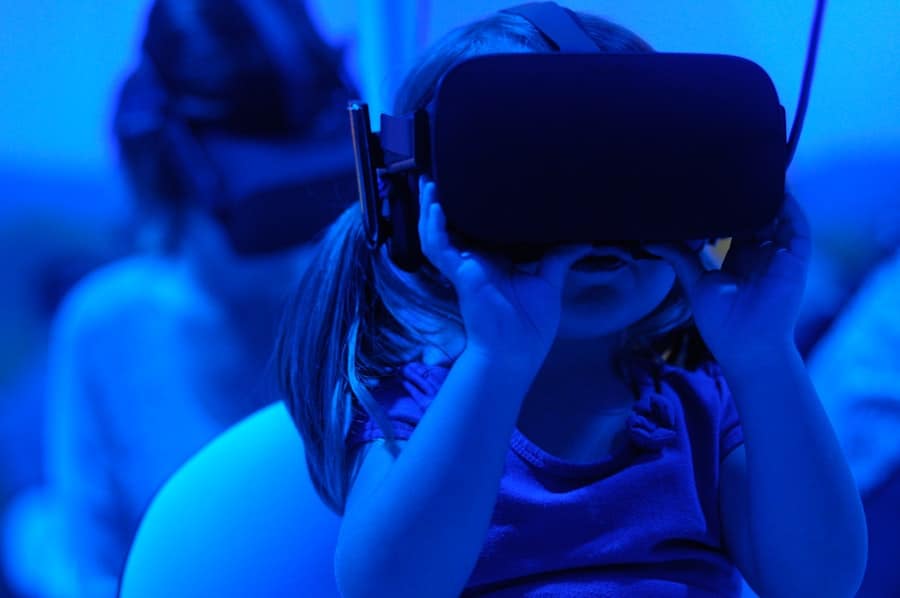The Metaverse is a concept of a shared virtual space that combines elements of augmented reality and virtual reality. It represents a convergence of digital and physical realities, creating a persistent, immersive environment accessible through various devices such as VR headsets and AR glasses. The term gained popularity through science fiction works like Neal Stephenson’s “Snow Crash” and the film “The Matrix.”
Rather than a single virtual world, the Metaverse is envisioned as a network of interconnected virtual spaces maintained by user interactions.
It aims to provide a platform for work, socializing, entertainment, and other activities, mirroring the physical world in many aspects. Major technology companies, including Meta (formerly Facebook), Microsoft, and Google, are investing heavily in developing the infrastructure and technologies necessary to realize this concept. Virtual Reality (VR) technology has evolved significantly since its conceptualization in the 1950s.
Initially primarily used for gaming and entertainment, VR has expanded its applications across various industries. The 1990s saw the introduction of early VR headsets, and subsequent technological advancements have improved hardware, software, and content creation capabilities. Today, VR is utilized in diverse fields such as healthcare for medical training and therapy, education for immersive learning experiences, architecture and design for virtual prototyping, and military applications for simulation and training.
The technology has become more accessible and affordable, leading to increased adoption and development of new use cases. As VR technology continues to advance, it is expected to play a crucial role in shaping various industries and potentially serve as a primary means of accessing and interacting with the Metaverse. The ongoing evolution of VR and its integration with other technologies is likely to further blur the lines between physical and digital realities, potentially transforming how people interact, work, and engage with digital content in the future.
Key Takeaways
- The Metaverse is a collective virtual shared space, created by the convergence of virtually enhanced physical reality and physically persistent virtual reality.
- Virtual reality has evolved from basic 3D graphics to immersive, interactive experiences, paving the way for the development of the Metaverse.
- Platforms and technologies such as VR headsets, augmented reality, and blockchain are key components in navigating the Metaverse.
- The Metaverse has the potential to revolutionize industries such as gaming, entertainment, education, and healthcare.
- Social interactions in the virtual reality universe are becoming more immersive and realistic, blurring the lines between physical and virtual interactions.
Immersive Experiences with VR and AR
At the core of the Metaverse are VR and AR technologies, which provide users with immersive experiences that blur the lines between the physical and digital worlds. VR headsets, such as the Oculus Rift, HTC Vive, and PlayStation VR, transport users into fully immersive virtual environments, while AR glasses, like Microsoft HoloLens and Magic Leap, overlay digital content onto the real world.
Foundational Platforms for the Metaverse
These technologies are essential for creating a sense of presence and immersion within the Metaverse, allowing users to interact with each other and digital objects in real time. In addition to VR and AR technologies, navigating the Metaverse also requires robust platforms that serve as the foundation for creating and accessing virtual spaces. Companies like Meta (formerly Facebook), Microsoft, and Epic Games are all developing platforms that aim to bring the Metaverse to life.
Shaping the Future of Virtual Environments
These platforms provide tools for content creation, social interaction, commerce, and more, allowing users to build and explore virtual worlds with unprecedented freedom and creativity. As the Metaverse continues to evolve, we can expect to see a proliferation of platforms and technologies that cater to different use cases and user preferences, ultimately shaping the way we engage with virtual environments in the future.
The Impact of the Metaverse on Industries

The emergence of the Metaverse is poised to have a profound impact on various industries, revolutionizing the way we work, play, and interact with digital content. In the entertainment industry, the Metaverse presents new opportunities for immersive storytelling and interactive experiences that go beyond traditional forms of media. Virtual concerts, live events, and interactive narratives are just some of the ways in which the entertainment industry is leveraging the Metaverse to engage audiences in new and exciting ways.
In the retail sector, the Metaverse has the potential to transform the way we shop and experience products. Virtual showrooms, interactive shopping experiences, and digital try-on services are just a few examples of how retailers are using the Metaverse to create engaging and personalized experiences for consumers. The healthcare industry is also exploring the potential of the Metaverse for medical training, telemedicine, and therapy, offering new ways to deliver care and support to patients.
Furthermore, in the education sector, the Metaverse has the potential to revolutionize learning by providing immersive and interactive experiences that enhance engagement and retention. Virtual classrooms, educational simulations, and collaborative learning environments are just some of the ways in which educators are leveraging the Metaverse to create more dynamic and effective learning experiences for students.
Social Interactions in the Virtual Reality Universe
| Platform | Number of Users | Number of Interactions |
|---|---|---|
| Oculus | 10 million | 50 million |
| SteamVR | 5 million | 30 million |
| PlayStation VR | 4 million | 25 million |
Social interactions are at the heart of the Metaverse experience, as it is a place where people can connect with each other in virtual environments. In the Metaverse, users can socialize with friends, meet new people, attend virtual events, and engage in various activities together. The sense of presence and immersion provided by VR and AR technologies allows for more meaningful and authentic interactions, as users can communicate through gestures, expressions, and body language just like they would in the physical world.
The social aspect of the Metaverse also extends to collaborative activities such as virtual meetings, team building exercises, and co-working spaces. As remote work becomes more prevalent, the Metaverse offers new opportunities for teams to collaborate and connect in virtual environments that mimic real-world interactions. This has significant implications for businesses looking to create more engaging and productive work environments for their employees.
In addition to socializing and collaboration, the Metaverse also presents new opportunities for commerce and entertainment. Virtual events, concerts, and experiences allow for unique forms of engagement that transcend traditional forms of media. Brands can create immersive marketing campaigns and interactive experiences that captivate audiences in ways that were previously not possible.
As social interactions continue to evolve within the Metaverse, we can expect to see new forms of social dynamics emerge that redefine how we connect with others in virtual spaces.
Opportunities and Challenges in the Metaverse
The rise of the Metaverse presents a myriad of opportunities across different sectors, from entertainment and education to healthcare and commerce. The ability to create immersive experiences that transcend physical limitations opens up new possibilities for innovation and creativity. Businesses can leverage the Metaverse to create unique marketing campaigns, virtual showrooms, and interactive experiences that engage consumers in new ways.
Educators can use virtual environments to create more dynamic learning experiences that enhance student engagement and retention. Healthcare professionals can utilize the Metaverse for medical training, telemedicine, and therapy to deliver care in innovative ways. However, along with these opportunities come challenges that need to be addressed as the Metaverse continues to evolve.
Privacy and security concerns are paramount as users engage in virtual environments where personal data may be at risk. Ensuring that user data is protected and secure will be crucial for building trust within the Metaverse. Additionally, issues related to accessibility and inclusivity need to be considered as virtual environments become more prevalent.
It is important to ensure that everyone has equal access to these spaces regardless of their physical abilities or socioeconomic status. Furthermore, as with any emerging technology, there are ethical considerations that need to be taken into account as we navigate the complexities of virtual interactions. Creating guidelines for appropriate behavior within virtual spaces will be essential for fostering positive social dynamics within the Metaverse.
As we continue to explore the potential of this virtual universe, it is important to approach its development with a thoughtful and responsible mindset that prioritizes user well-being and ethical considerations.
The Future of the Metaverse

Enhanced Immersion through Technology
The integration of AI-driven avatars, haptic feedback systems, and spatial computing technologies will further enhance our ability to engage with virtual environments in more natural and intuitive ways.
Emerging Social Dynamics
In addition to technological advancements, we can also anticipate new forms of social dynamics emerging within the Metaverse as people continue to connect and collaborate in virtual spaces. The concept of identity within virtual environments will evolve as users navigate between their physical selves and their digital avatars. This will give rise to new forms of self-expression and social interaction that transcend traditional boundaries.
New Business Opportunities and Paradigm Shift
Moreover, as industries continue to embrace the potential of the Metaverse, we can expect to see new business models emerge that capitalize on immersive experiences and virtual interactions. From virtual real estate to digital goods and services, there will be new opportunities for entrepreneurs and businesses to thrive within this evolving landscape. In conclusion, the Metaverse represents a paradigm shift in how we engage with digital content and each other.
If you’re interested in learning more about the future trends and innovations in the metaverse industry, you should check out this article on metaversum.it. It provides projections and insights into how the metaverse is expected to evolve and grow in the coming years.
FAQs
What is the metaverse?
The metaverse is a collective virtual shared space, created by the convergence of virtually enhanced physical reality and physically persistent virtual reality. It is a concept that refers to a collective virtual shared space, created by the convergence of virtually enhanced physical reality and physically persistent virtual reality.
What can you do in the metaverse?
In the metaverse, users can interact with a computer-generated environment and other users. This can include socializing, gaming, attending events, shopping, and even working in virtual environments.
How is the metaverse different from virtual reality?
Virtual reality is a fully immersive experience that takes place in a computer-generated environment, while the metaverse is a collective virtual shared space that can include virtual reality experiences but also encompasses augmented reality and other forms of digitally enhanced physical reality.
Is the metaverse the same as the internet?
No, the metaverse is not the same as the internet. The internet is a network of interconnected computers and servers, while the metaverse is a collective virtual shared space that can be accessed through the internet but is not synonymous with it.
What are some examples of the metaverse?
Some examples of the metaverse include virtual worlds like Second Life, social VR platforms like VRChat, and gaming platforms like Roblox and Fortnite. Additionally, companies like Facebook and Microsoft are investing in developing their own metaverse platforms.











Leave a Reply